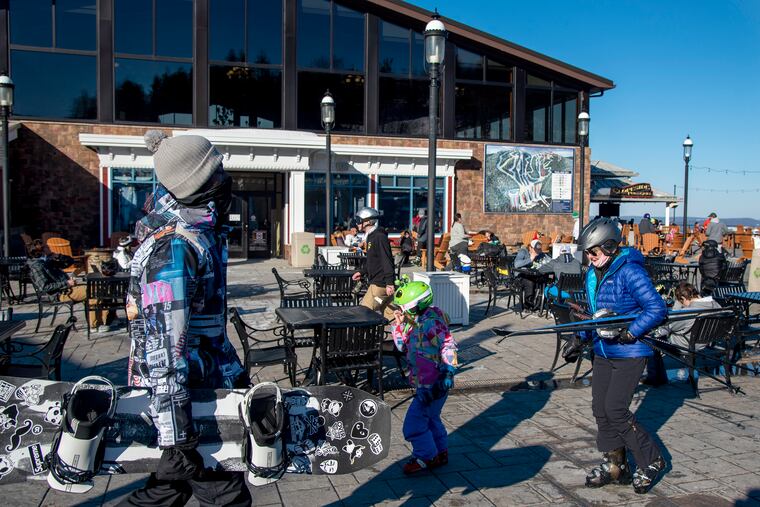Northeastern Pa. struggled to recruit and retain skilled employees long before COVID-19 | Opinion
It's important for communities to embrace workforce development measures that attract and retain those younger workers who are inclined to relocate.

In Northeastern Pennsylvania, so often a microcosm of national trends, communities face workforce challenges as pandemic life gradually recedes. In the Poconos, where tourism is a multibillion-dollar annual industry, the hospitality sector struggles to find workers. “In our neighborhood, you go to any restaurant, any hotel, any waterpark, and everyone is short-staffed,” one restaurant owner told the Pocono Record. The co-owner of a Scranton-based grocery chain told the Times Leader that he “could probably hire about 100 people today.”
Such anecdotes are illustrative of Northeastern Pennsylvania’s services sector labor market, but also reflective of similar regions across America. As the Bureau of Labor Statistics predicted earlier this year, the pandemic era will contribute to employment declines among occupations that often don’t require advanced education degrees. This includes major industries such as food services, retail, and transportation.
But in Northeastern Pennsylvania, research by my organization — the Institute for Public Policy and Economic Development — indicates communities were grappling with workforce issues before COVID-19. As they emerge from the pandemic, it’s important for communities to develop strategies that address this past year’s economic challenges while accounting for long-term effects.
» READ MORE: ‘This is a real job’: Philly’s restaurant workers dissect the labor shortage, and contemplate a different future
Northeastern Pennsylvania’s economy has dramatically changed since anthracite coal mining fueled America’s industrial growth, turning this region into a hub of commerce and innovation. After World War II, when the industry collapsed, community-driven economic development revived the Scranton-Wilkes-Barre-Hazleton corridor with industrial parks and manufacturing growth. Today, the health-care sector, higher education, and community and social service organizations are major regional employers. And since the 2000s, the logistics, distribution, and warehousing industries have established a major presence.
But now, as retirees exit the workforce in Northeastern Pennsylvania and elsewhere, there aren’t enough younger people to fill the vacancies. As hiring continues at a brisk pace, it’s important for communities to embrace workforce development measures that attract and retain those younger workers who, even before the pandemic, were inclined to relocate elsewhere.
Northeastern Pennsylvania is well-positioned to attract and build its labor force. Through talent incentives, communities and employers can recruit employees seeking a low cost of living in an area boasting many alluring characteristics, including beautiful scenery, charming towns, and a rich culture. The region, moreover, is located within close proximity to major metros, including New York and Philadelphia.
Educational stakeholders, particularly school districts, can also play a crucial role in retaining young graduates. Teacher-in-the-workforce programs, for example, can connect K-12 schools with employers. In high school, work-based learning, summer employment, and internship programs are important.
Workforce retention has a marketing component, too. Discover NEPA, for instance, uses social media and other promotional tools to encourage people to move to and stay in the region. Those initiatives could expand by connecting students with local job opportunities.
» READ MORE: Unemployment remains high, yet many businesses say they can’t find enough workers
Area employers play an important part. They can offer training and advancement opportunities to their workers — efforts that, in turn, can help retain talent, build a skilled workforce, and create opportunities for new employees. Improved resources, particularly access to child care, would boost labor-force participation and productivity.
Such initiatives, though, aren’t possible without the state, which should consider supporting loan repayment or forgiveness programs that attract and retain graduates in high-demand occupations. Pennsylvania offers such programs for primary care practitioners and dentists, for example, and lawmakers should consider offering them to other professionals, as well.
Northeastern Pennsylvania’s communities have to consider the pandemic’s disproportionate impact on people of color and women and work toward equitable solutions to removing previous systemic barriers to jobs and training programs.
As recovery from the pandemic continues, Northeastern Pennsylvania can demonstrate how workforce development succeeds through regional efforts. Like elsewhere in the Rust Belt, this storied pocket of Pennsylvania continues to adjust to economic transition. Coordinating efforts can maximize opportunities for all.
Teri Ooms is the executive director of the Institute for Public Policy and Economic Development in Scranton and Wilkes-Barre. A version of this piece first appeared in RealClearPolicy.